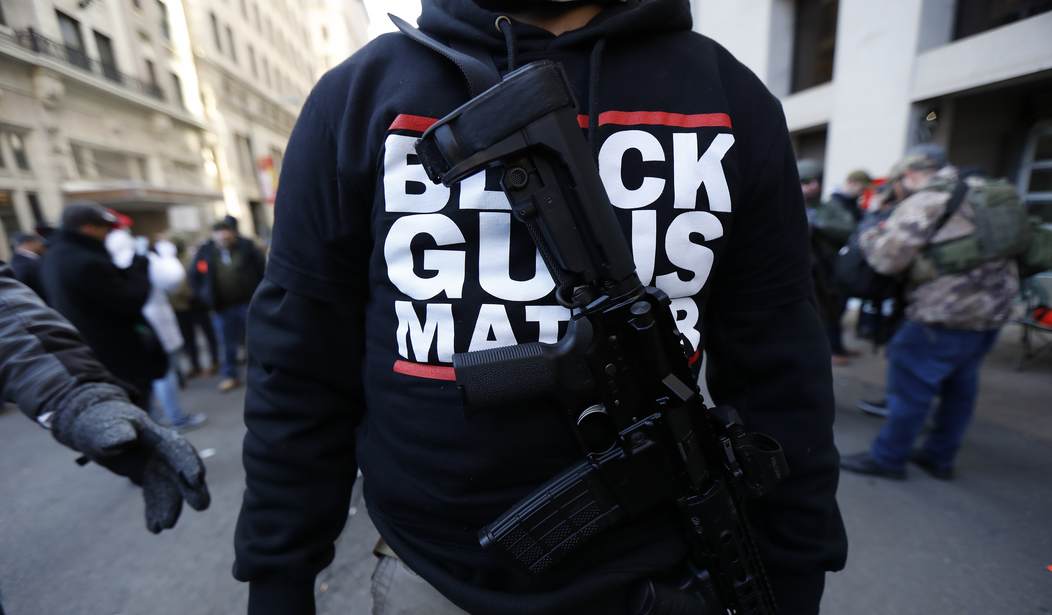A few months ago Emory University professor Carol Anderson released her book “The Second: Race and Guns in a Fatally Unequal America“, which lays out her argument that the right to keep and bear arms in the United States has never been applied equally to all of its citizens. There’s a fundamental inequality in the Second Amendment, according to Anderson, and it’s been there all along.
In fact, the professor claims that the Second Amendment isn’t actually about the right to keep and carry a gun at all. It’s merely a tool for “anti-blackness”, and since it can never be equally applied (in her opinion) then it would be better for all if we simply dispensed with the right altogether.
Now Fordham University law professor Nicholas Johnson, author of the 2014 book “Negroes and the Gun: The Black Tradition of Arms” and someone with a very different view of the role that the right to keep and bear arms has played among black Americans since the Founding Era, is out with his review of Anderson’s tome, and he expertly slices and dices her arguments into shreds.
“The Second Amendment is so inherently structurally flawed, so based on Black exclusion and debasement, that, unlike the other amendments, it can never be a pathway to civil and human rights for 47.5 million African Americans,” Anderson writes. She compares the “current-day veneration of the Second Amendment” to “holding the three-fifths clause sacrosanct,” arguing that both were “designed to deny African Americans humanity and rights while carrying the aura of constitutional legitimacy.”
Reading these claims, I expected a full-frontal attack on the contrary ideas I have developed in my own scholarship. Moving to the endnotes, I was surprised to find my work liberally cited. Anderson and I have worked through much of the same material but reached dramatically different conclusions about the utility, legitimacy, and importance of the right to arms in general and for black folk in particular.
Johnson says that one of the biggest flaws in Anderson’s thesis is not what she includes, but rather what she leaves out of her material.
Anderson, chair of African American Studies at Emory University, presents the Second Amendment as a proxy for the much more textured American right to arms. This approach allows her to focus on a narrow slice of the federal constitution’s story. She ignores the lessons from the American Revolution, including British attempts to disarm colonists as the rebellion came to a boil. Those conflicts provided plenty of reasons for the framing generation to think about and advocate a robust private right to arms, separate from concerns about slavery.
The Second also does not acknowledge the right-to-arms story in the places where most government action on guns has always occurred: the states, which unlike the federal government have broad police powers. The first federal gun control law did not appear until the 1920s. Gun regulation prior to that point was a function of state and local law.
The Second does not address the independent protections of the right to arms established in 44 of 50 state constitutions. Anderson expurgates the history of the federal right in order to damn the Second Amendment as rooted in slave control. But the broader right to arms enshrined in the state constitutions contradicts that portrayal.
As Johnson goes on to explain, while some state-level protections were put in place contemporaneously or even before the Bill of Rights was ratified, many other states specifically included or added similar language throughout the 19th and 20th centuries. Obviously these changes weren’t made to protect the rights of slave owners or prevent black Americans from owning or carrying a gun.
Anderson also gives short shrift to the transformative right-to-arms conversation surrounding the 14th Amendment. Post–Civil War efforts to extend the right to arms were a direct response to racist gun control in the former Confederacy. The debate surrounding the 14th Amendment demonstrates an explicit aim to extend the right to arms, along with other federal constitutional guarantees, to black people. And there is rich evidence that freedmen considered the right to arms a crucial private resource.
Anderson concludes that the right to arms as developed in the post–Civil War period was still structurally infected by racism and was as a practical matter ultimately useless to blacks.
The rebuttal to this is in the words and actions of black folk who actually lived through those nightmares. Contrary to Anderson’s claim that there is no promise in the right to arms, the history of the freedom movement spills over with black people using arms to fight off deadly threats and embracing arms as a crucial resource in the face of state failure, neglect, and overt hostility.
There is a considerable body of writing from black people who experienced the terror that Anderson recounts, and it is at odds with her idea that blacks should abjure armed self-defense.
If you want to read some of those stories that Johnson mentions, I’d encourage you to pick up a copy of his book, which should be required reading for Second Amendment enthusiasts and lovers of American history. Many of the stories are incredibly painful reminders of the subjugation and second-class citizenship that black Americans were subjected to even after the ratification of the Fourteenth Amendment, but they are also critically important in understanding the mindset that led so many civil rights activists from Ida Wells to Fannie Lou Hamer (along with countless everyday Americans whose stories will never be told in history books) to embrace their right to keep and bear arms for self-defense instead of simply demanding the disarmament of everyone else as Carol Anderson seemingly prefers.









Join the conversation as a VIP Member